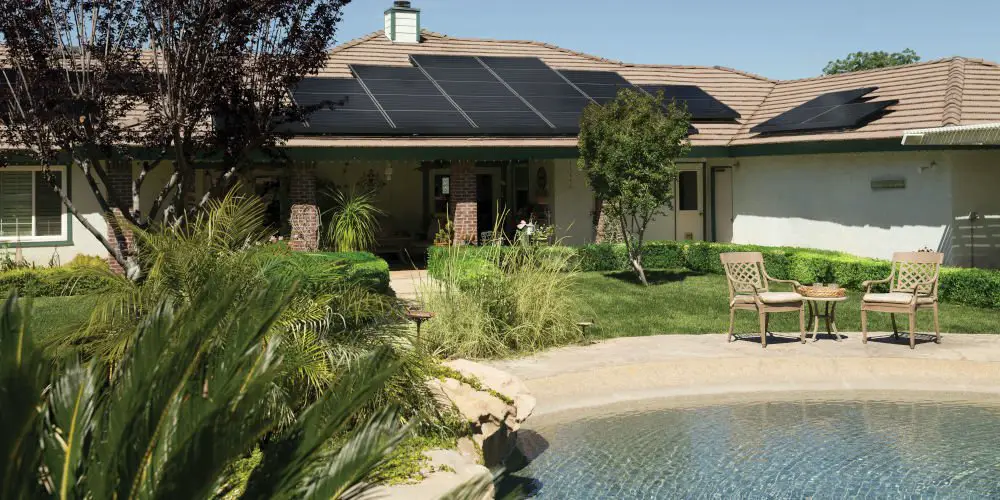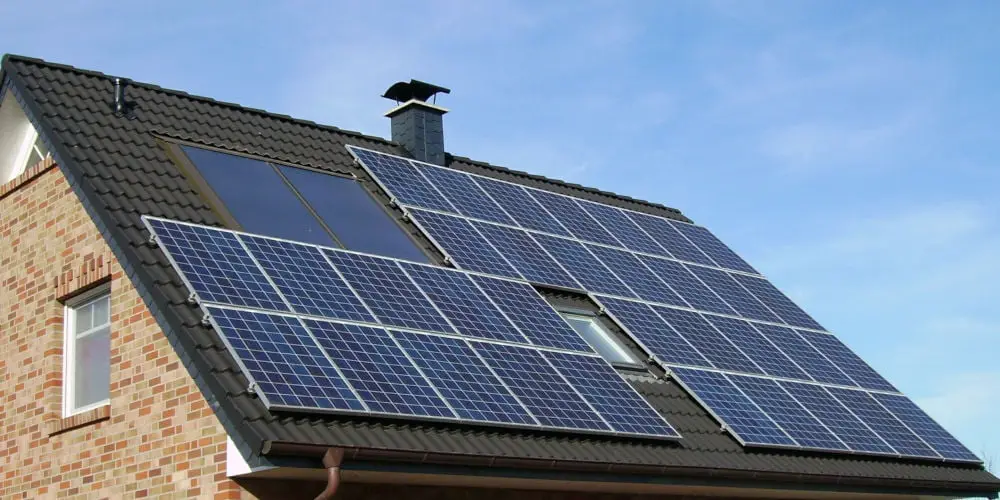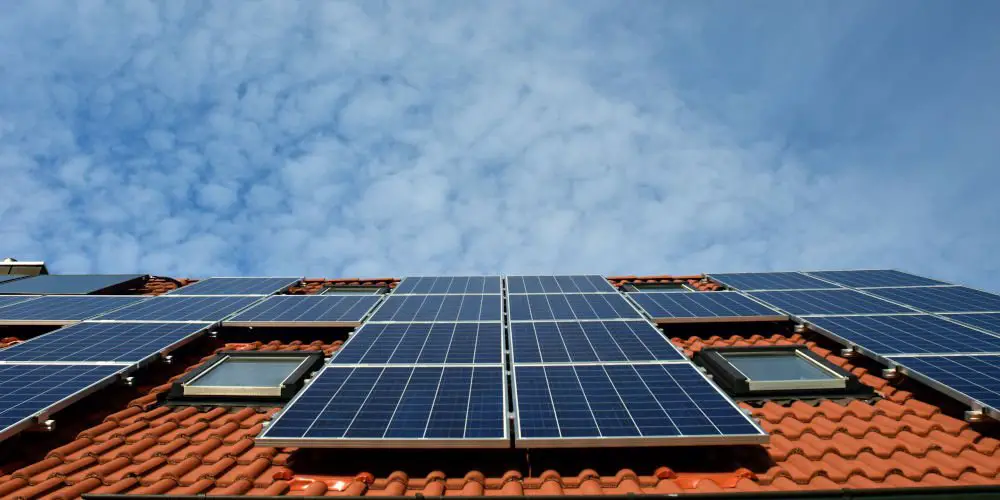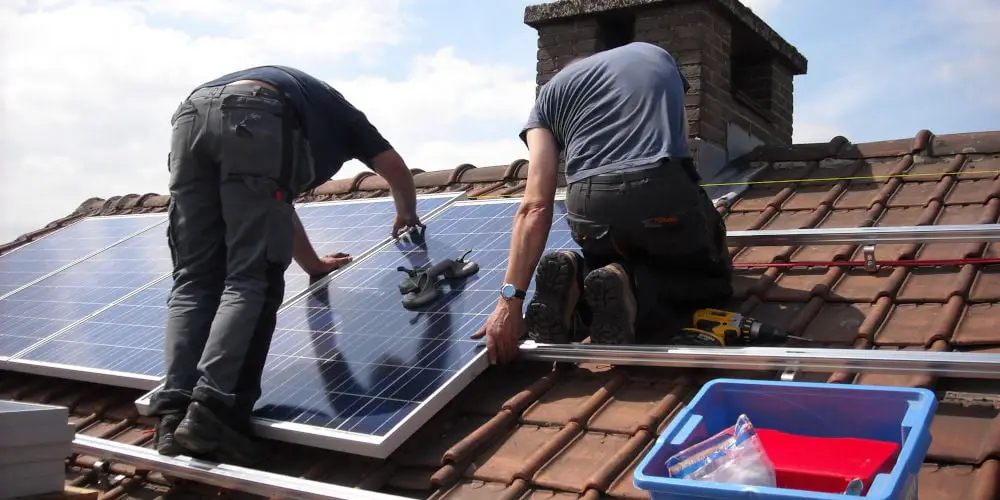Are solar panels a good investment or just hype?

The move to a greener world involves replacing coal and other old fuel sources with newer technologies, including solar panels. And yet many homeowners still wonder are solar panels a good investment? You might be sceptical and for good reason.
Until a few years ago, installing solar panels were a lucrative business. Many homeowners benefited from a generous government scheme that offered a long-term income guarantee. And while this initial scheme is gone, it was replaced by a similar but slightly less generous scheme.
Regardless of whether or not the government is buying any excess energy you generate, solar panels will still lower your energy bills from the start while lowering your carbon footprint. A win-win for you and the planet!
But are solar panels a good investment, or is it all hype that doesn’t add up? Let’s explore the basics of solar panels and how to decide if you should invest in them.
What’s all the fuss about with solar panels?
You might assume that the UK’s weather doesn’t provide enough sunlight to generate a meaningful amount of solar energy. But that’s a myth that comes from misunderstanding how solar technology works.
You don’t have to live in the south of France or Spain to generate electricity using solar panels, although that does help!
Solar panels work by harvesting daylight, not sunshine. Even on gloomy days, they still generate some electricity. That said, your location does impact how many hours of daylight you typically receive. For example, the south gets slightly more daylight than the north.
A 2020 government report estimates that nearly a million British homes have solar panels installed (around 3.3% of residential dwellings). While that sounds like a tiny amount of homes, the UK is among the top 12 countries for solar power capacity.
There are two types of solar panels. The first type is photovoltaic solar panels (solar PV), which harvest the sun’s energy and convert it into electricity that powers items within the home. The other type is solar thermal, which allows you to heat water and reduce heating bills.
As solar PV systems are more common, they’ll be the focus of our article.
Government incentives for solar panels
On 31 March 2019, the generous Government incentive scheme was closed to new installations. Since this date, installing solar panels means you won’t receive feed-in payment for generating or exporting electricity to the grid.
The knock-on effect of this change is you can no longer get solar panels for free as companies can’t offer such promotions. However, the cost of buying panels has decreased massively since 2010.
However, the replacement Smart Export Guarantee (SEG) scheme was launched on 1 January 2020. Under SEG, you can sell any excess electricity you generate back to the National Grid. While this new scheme is less generous, it does help to recoup your investment.
Where’s best to install them?
You can install solar panels in several positions around your home, including on the roof, on a wall, and on the ground. The most popular site by far is the roof. However, it might not be the most effective location to generate the maximum amount of energy.
If you decide to install your solar panels on a roof, you want to choose a south-facing area. If you have a south-west- or west-facing roof, you’ll still be able to generate some electricity, but it’ll likely be less effective.
You’ll want to optimise where you position your solar array so they effectively generate electricity. Doing this will help you reduce your energy bills and earn money by selling excess electricity to the grid. Plus, it will help you quickly recoup your initial investment.
Ideally, your roof should be unshaded between 10 am and 4 pm as this will allow the panels to collect the most energy. It’s fine if your solar panels are shaded early or late in the day by other buildings or trees.

Am I locked into an energy supplier?
Many homeowners mistakenly believe installing solar panels automatically locks them into one energy supplier. Thankfully, this isn’t the case. You can change suppliers whenever you feel like it.
What can be confusing is having to deal with the feed-in tariff or SEG on top, as several energy suppliers support both schemes. The Ofgem website lists all the energy companies active in the old feed-in tariff scheme or the new SEG scheme.
You can sell your excess energy to any firm on the list. However, the price you’ll be paid per kilowatt hour (kWh) depends on the market, season and demand. Currently, you can get between 2-5.6p per kWh.
Potentially, you could buy energy from one firm and sell any excess you generate to another. Again you’re free to switch energy suppliers whenever is best for your situation.
Will my house be worth more by installing solar panels?
It’s impossible to state categorically that solar panels will increase or even decrease your home’s value as it depends on several factors.
Some worry that plastering ugly panels on their roof will have a detrimental effect on the value. However, a home efficiently generating energy is often more attractive to buyers.
As a large investment, it’s unlikely you’ll see an instant jump in the property’s value. So if you’re planning to move in the next few years, it might be worth not adding solar panels as you’re unlikely to see a return on your investment.
If you’re concerned about the potential impact, both in terms of aesthetics and property value, ask local estate agents for their professional advice.
Do I need planning permission to install a Solar PV system?
Solar PV systems are generally covered under Permitted Development rights, so don’t require planning permission. However, if your property has a flat roof, is listed or is in a conservation area, you will need planning consent. If you’re unsure, call or email your local planning authority.
Are solar panels difficult to maintain?
After properly installing a well-designed solar PV system, it requires little maintenance. You’ll probably need to replace the inverter, a key system component, within 25 years. They cost around £800 and are easy to change.
Things can go wrong, so you’ll want to ensure the installer offers at least a 20-year warranty.
Your building insurance may cover the panels if a storm causes roof damage. So you’ll want to confirm they are covered by your insurer and policy before you install a system. Adding solar panels to your insurance coverage may increase the premium but could be worth the extra.

If I move, what happens to the solar panels?
Solar panels aren’t designed to be moved once installed. So if you decide to move, you can’t take the panels or the feed-in payments with you.
While you could physically remove the panels from your old home and reinstall them on the new property, you wouldn’t qualify for feed-in payments as they are now considered second-hand units.
Also, being a custom-designed and installed system, moving them to a new roof is unlikely to offer optimum performance and may hurt your new home’s value.
That said, assuming the panels remain, the new owner of your old home will continue to receive the payments.
How much do solar panels cost?
As basic technology advances, the price falls. Buying one of the first solar panel systems would cost at least £10,000. Today, the cost is more affordable as most system costs slightly over £6,000.
That said, £6,000 could buy a decent kitchen or a home cinema room. You could use that sum to fund part of an extension; or a new boiler and some insulation. With this information, you should be able to answer are solar panels a good investment for your situation.
Will I be able to recoup the upfront investment?
There are two ways that a new solar panel system can pay for itself. Firstly, they can help you lower your energy bills. Also, you can sell excess energy under either the feed-in tariff (old) or SEG (new) schemes.
The Energy Saving Trust estimates a typical 4 kWp (kWp stands for kilowatt peak – how the power produced by panels is measured) system can reduce your annual bills by £85 to £220. Of course, your saving depends on the system size, typical electricity use and other factors.
As the panels will generate electricity during the day, if you work from home, you’ll use less from the grid, saving you money.
Recouping your Solar Panel investment is simple maths, but be careful!
It only makes sense to install a solar panel system if you can recoup your investment within a reasonable time period. However, getting the maths to add up can be tricky, even when you include the feed-in or SEG schemes.
Of course, saving £100 or £200 each year on your bills is an amount you’ll notice. That said, it’ll take years to start benefiting from the system. You may find you can’t recoup the investment within the usable lifespan of 25 years, making installing a system unfeasible.
Putting exporting energy to one side, let’s look at some examples for a system costing £6,200.
If you save £250 per annum, it’ll take slightly under 25 years to recoup your investment.
An annual saving of £140 means it’ll take just over 44 years to repay your initial investment.
If you save £95 per annum, it’ll take slightly under 65 years to recoup your investment.
At the lower end of these examples, it’ll take nearly your lifetime to recoup the investment. Not good news, as you’ll need the system to keep running for almost three times its intended lifespan. At least you can recycle your solar panels for free.
Of course, having the ability to sell excess energy will provide you with an additional way to recoup, but you shouldn’t rely on this income to recoup the investment as the Government can (and will) change the scheme as they see fit.
If you have a large house or are at home during the day, your savings will be better and should nearly pay for the system.

Are you already receiving feed-in tariff payments?
While the scheme is closed, you shouldn’t notice any changes if you’re already benefiting from feed-in payments. Depending on when your system was installed and certified, the payments are guaranteed for at least 20 years (25 years if installed and certified before 31 August 2012).
Who should install your system?
After adding up the numbers, if you’re convinced that adding solar panels are a worthwhile investment, you’ll need to find a local installer. You’ll need to ensure that both the system and the installer meet the standards of the Microgeneration Certification Scheme (MCS).
As with any large task within the home, it’s worth asking three different firms to produce written quotes. It’s worth asking friends and family for recommendations. You can also research local firms using the MCS installer database.
With each quote, ensure the company has included scaffolding, removal of the existing roof and other roofing works, internal wiring works, sorting out a connection agreement with the energy supplier, electrical connection work, and a generation meter.
While this might sound like a lot of work, fitting a system typically takes a day or two.
Should I Register my solar PV system?
Under both the feed-in tariff and SEG schemes, you’d need an MCS certificate to register for payments with a licensed energy supplier. Even if you don’t plan to export energy, we’d still recommend using an MCS-registered installer and applying for the certificate.
Doing both ensures that the system has been installed to a high standard and should allow you access to Government schemes.
So, are solar panels a good investment?
Now you have a better understanding of how solar panels work, and if installing a system makes financial sense, you can make an informed decision. You should be able to answer are solar panels a good investment?
In this introduction to solar panels, we’ve only covered the basics. So, it’s worth researching if you’re eligible for a local Government grant or incentive.
If the numbers don’t add up, there are still several ways you can save £100 plus each year on your household bills. These include simple actions like turning your thermostat down 2 degrees, washing clothes at 30 degrees and changing your bulbs for energy-efficient ones.
You could also upgrade your boiler or install more insulation, as both will help you reduce your bills.




